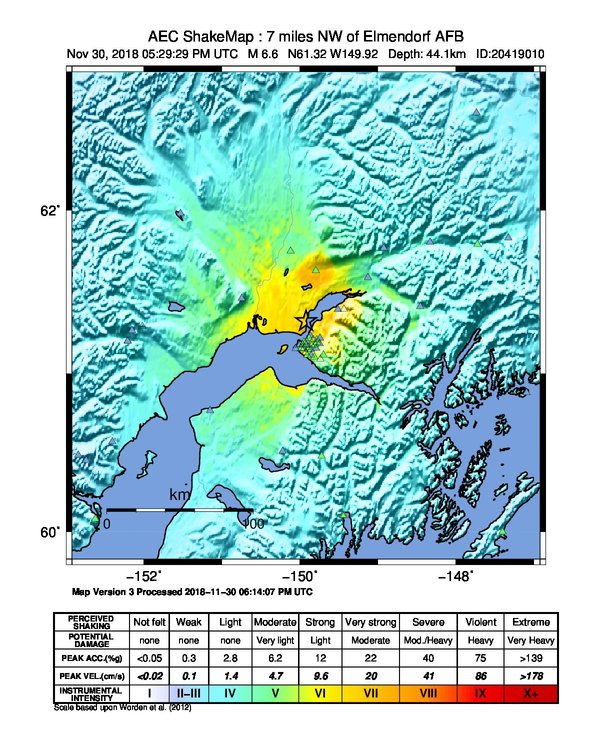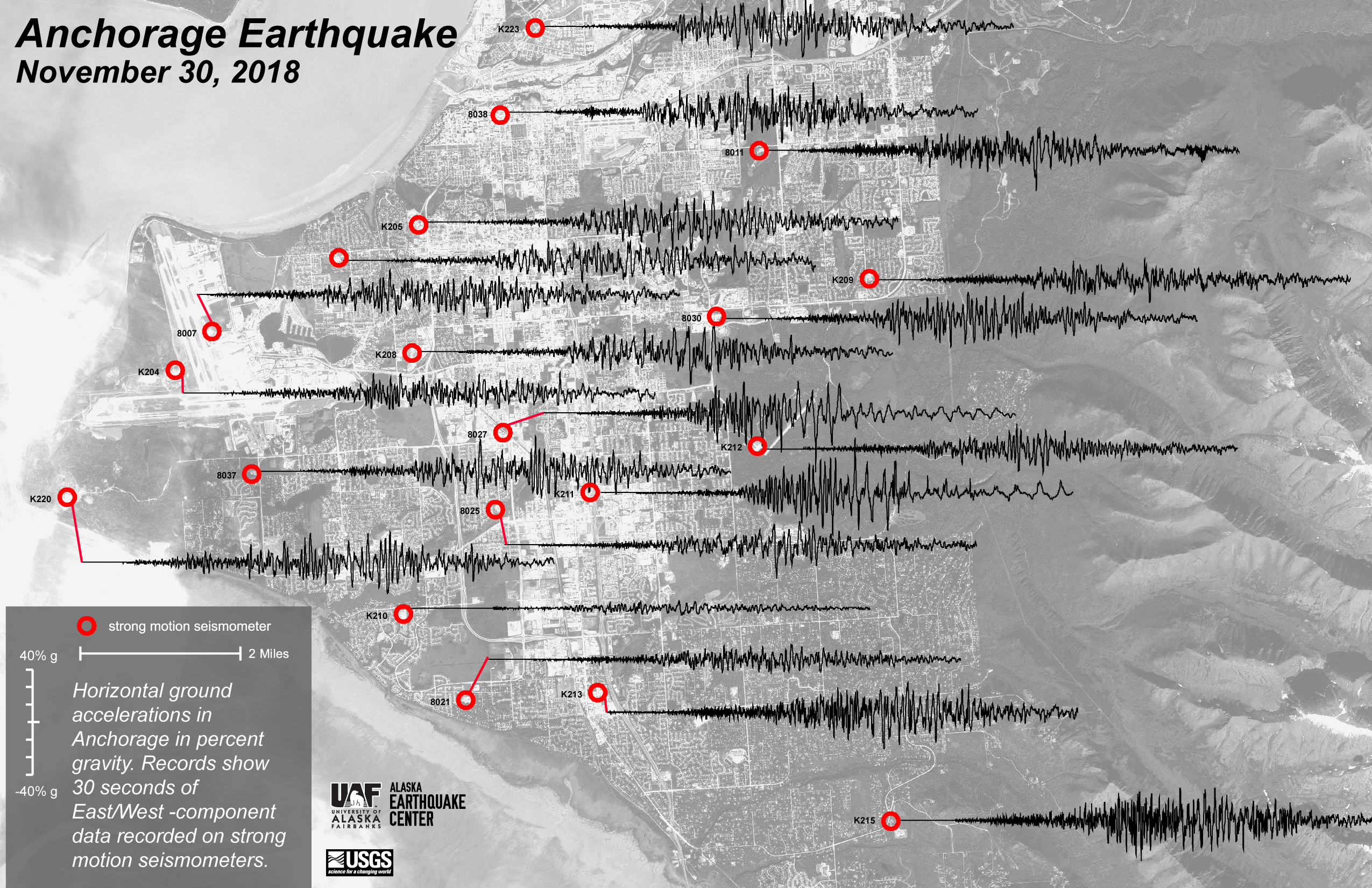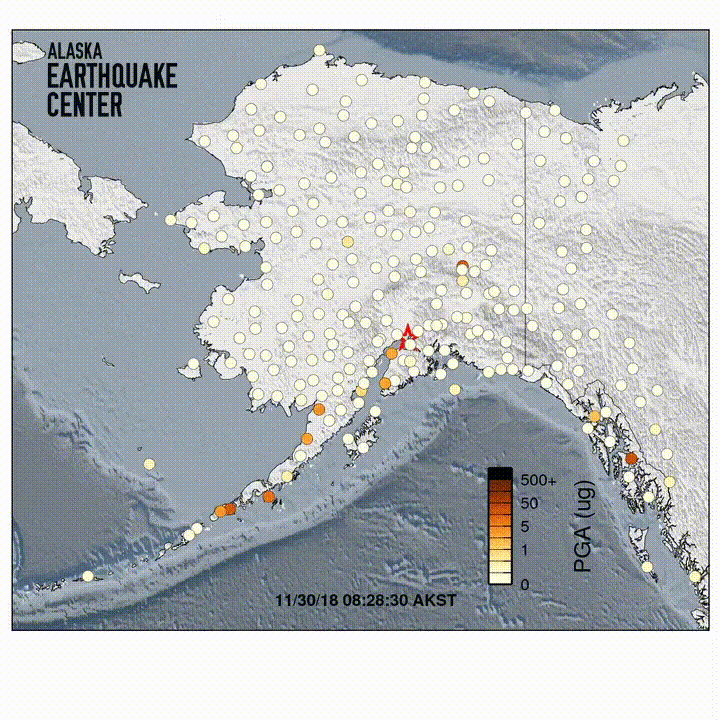


Updated December 2, 2018
A magnitude 7.1 earthquake struck just seven miles north of Anchorage at 8:29am on Friday morning, at a depth of about 27 miles. The earthquake caused power outages, damage to roads and buildings, and closures of schools, businesses and government offices. There is no official count of casualties yet, but hospitals reported receiving two patients with life-threatening injuries and dozens of less serious cases, including broken bones, injuries from falls, and lacerations from broken glass. There have been no reported deaths.
This was the largest earthquake to strike near Anchorage since the 2016 M7.1 Iniskin earthquake. Because this quake was so much closer, the impacts to Anchorage and Mat-Su were far more severe and widespread. In the first hours, the picture was unclear but damage reports incuded the following:
Those are just representative examples of the early reports. Meanwhile, the Anchorage School District asked parents to pick up their children if possible, and students at some schools were moved to other locations that have power. State offices closed for the day, and the railroad and TAPS both shut down for safety inspections. TAPS found no damage and resumed operations. The railroad found heavy damage and remains shut down at the time of this update.
The strongest aftershock, a magnitude 5.7 just three miles north of Anchorage, struck six minutes after the mainshock. As of this update, there have been over 1,400 recorded aftershocks including 17 with magnitudes greater than 4. We have not identified a foreshock for this earthquake.
Here is the initial USGS aftershock forecast:
Note: On March 8, we revised the magnitude of the November 30 Anchorage earthquake upward, from 7.0 to 7.1. This piece has been edited to reflect that revision.


